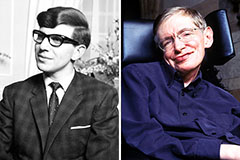Have you ever asked yourself what your physical features reveal about your emotions? Body analysis seeks to explain how our physical traits and gestures reflect deeper psychological patterns.
Whether you’re curious about psychology or already familiar with behavioral analysis, this complete guide will give you valuable insights.
Keep reading to discover what body reading can reveal about people. By the end, you’ll know how to apply these insights in daily life.
The Importance of Body Analysis
Character traits body analysis gives you an unspoken dimension of communication, helping in personal relationships.
Coaches apply body reading techniques to set goals.
This skill reduces misunderstandings and helps build trust, because you’re responding not just to words but also to what the body communicates.

Methods of Behavioral Body Analysis
There are several schools within body analysis, each focusing on different aspects of the human body. One popular method examines physiognomy to infer personality traits.
The “body explains” model, made popular by modern coaches, connects physical structure with specific personality archetypes.
Practicing multiple types of behavioral reading can give you a more complete picture of someone’s character and emotional state.

Practical Uses of Behavioral Body Analysis
Applying body analysis in real life starts with observation. Begin by noticing posture in different contexts.
In professional settings, character reading helps build rapport and improve communication. Sales professionals may observe a client’s facial tension to gauge interest or resistance.
This skill deepens empathy because it encourages listening beyond words.
Common Myths About Body Analysis
For example, crossed arms might signal defensiveness, but could also mean someone is simply cold or tired.
People are shaped by culture, upbringing, and experiences that go beyond physical form.
Parents use body analysis to understand children’s unspoken feelings. Teachers notice students’ posture shifts to catch disengagement.
How the “Body Explains” Model Works
It’s used by therapists to help people understand why they react certain ways and how to unlock hidden emotional blocks.
For example, a prominent chest might symbolize repressed anger.
Clients working with “the body explains” methods often experience breakthroughs as they connect tension areas with emotions.
Respectful Practice of Behavioral Body Analysis
Practicing body analysis ethically means respecting privacy and avoiding misinterpretation. Observing someone’s body language or traits doesn’t give license to diagnose them without consent or dialogue.
Another ethical guideline is to contextualize observations. A behavior or posture in one culture may mean something very different elsewhere.
When sharing insights from behavioral observation, it’s crucial to invite dialogue rather than declare facts.
How to Improve Your Body Analysis Abilities
Building body analysis skills takes practice, patience, and observation. Start by watching people in different settings, noticing gesture patterns.
It’s important to stay humble, knowing that no single signal tells the whole story. Observing clusters of signals gives a more accurate reading.
With consistent practice, your awareness grows, enhancing communication, relationships, and emotional intelligence.

Should You Explore Behavioral Body Analysis?
Whether you’re someone curious about human behavior, learning to read the body opens new dimensions of communication.
We’ve explored different methods of behavioral body reading, from modern movement analysis.
Let the process inspire curiosity, empathy, and openness as you unlock the silent language of the human body.
Frequently Asked Questions About Behavioral Body Analysis
What is body analysis?
It involves studying how the body expresses subconscious tendencies and communicates beyond words.
Can anyone learn body reading?
Yes, anyone can learn body reading with practice and guidance.
Can body reading tell everything about a person?
It provides clues and patterns but must be contextualized and combined with dialogue.
How can I use body analysis professionally?
Yes, body analysis has applications in coaching, therapy, HR, leadership, and sales.
What’s the difference between body analysis and body language reading?
Body analysis often includes interpreting physical structure, traits, and muscular development, while body language reading focuses more on gestures and movements.
site com maiores detalhes
 Brandy Then & Now!
Brandy Then & Now! Destiny’s Child Then & Now!
Destiny’s Child Then & Now! Bill Cosby Then & Now!
Bill Cosby Then & Now! Katey Sagal Then & Now!
Katey Sagal Then & Now! Stephen Hawking Then & Now!
Stephen Hawking Then & Now!